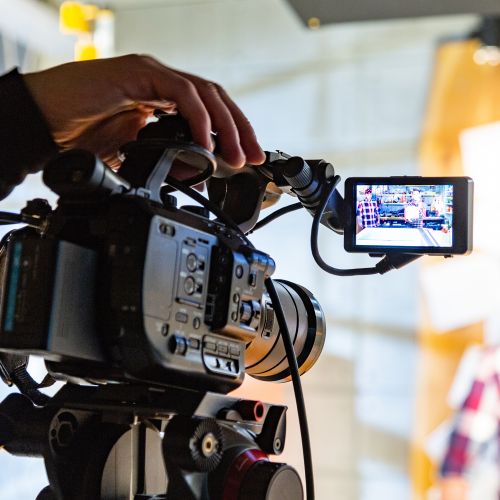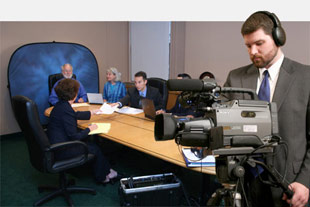Comprehending the Effect of Legal Videography on Case Outcomes
Comprehending the Effect of Legal Videography on Case Outcomes
Blog Article
Exploring the Devices of Legal Videography: Introduction Its Operation in Safeguarding Authentic Aesthetic Testament for Judicial Proceedings
In the realm of judicial procedures, the duty of legal videography stands as a foundation in protecting and offering visual proof. As technology proceeds to advance, the mechanisms behind legal videography have actually become increasingly complex, offering a critical layer of authenticity to testaments caught on video clip.
Historical Development of Legal Videography
Examining the historic development of legal videography reveals a substantial change in the catching and discussion of aesthetic evidence within the legal landscape. In the past, lawful proceedings heavily depended on written pictures and records to record events and offer proof. With the arrival of video clip technology, the legal industry saw a paradigm change in just how aesthetic testament was recorded and offered.
The advancement of legal videography can be traced back to the late 20th century when developments in video recording devices made it much more available for usage in courtrooms. This technological improvement not just improved the precision and dependability of aesthetic proof however likewise revolutionized the method situations existed to discretionary (Legal Videography). Attorneys started to identify the convincing power of video clip recordings in communicating emotions, nuances, and non-verbal cues that created records or pictures alone could not catch efficiently

Innovation Advancements in Video Clip Documents
What vital technical improvements have transformed video paperwork in the lawful field? The lawful field has actually seen substantial developments in video clip documentation innovation that have boosted the authenticity and integrity of visual evidence in judicial process.
In addition, innovations in video encryption and watermarking technologies have actually reinforced the security and tamper-proof nature of video proof, securing it versus unapproved modifications or meddling. The development of cloud storage space services and remote gain access to capacities has structured the storage space, retrieval, and sharing of video proof, promoting smooth cooperation amongst legal professionals and guaranteeing effective accessibility to important aesthetic testaments when required. These technical improvements in video documents have definitely revolutionized the legal field, enhancing the accuracy, reputation, and admissibility of aesthetic proof in judicial procedures.
Function of Legal Videographers in Court Setups
The evolution of video documentation innovation in the legal area has demanded a vital function for legal videographers in court room settings, making sure the stability and dependability of aesthetic statements presented during judicial proceedings. Lawful videographers play an essential function in capturing and preserving precise aesthetic evidence that can be pivotal in lawsuit. Their obligation encompasses establishing equipment, videotaping procedures, and generating high-quality video clips that precisely show the events in the court.
In courtroom setups, legal videographers must stick to strict standards and standards to keep the authenticity of the aesthetic record. click resources They need to possess an eager eye for detail and a detailed understanding of legal procedures to ensure that the footage they capture is a true representation of the occasions that took place. Furthermore, legal videographers typically function closely with legal teams to guarantee that the video proof straightens with the case's requirements and can be successfully presented in court to sustain the legal disagreements being made. Overall, the function of lawful videographers in court settings is crucial in maintaining the concepts of justice and guaranteeing the transparency of lawful procedures.

Ensuring Admissibility and Honesty of Video Evidence
To maintain the trustworthiness of visual proof presented in lawful proceedings, making sure the admissibility and honesty of video evidence is a critical duty for lawful videographers. Admissibility refers to the acceptance of evidence by the court, and for video evidence to be permissible, it should fulfill specific standards. Legal videographers play a vital function in guaranteeing that the video clips they record abide with the rules of evidence, such as significance, dependability, and credibility.
Honesty of video clip proof entails keeping the originality and accuracy of the video footage from the time it is taped up until it exists in court. This consists of safely keeping the video files, documenting the chain of safekeeping, and stopping any type of tampering or alterations. Legal videographers must comply with strict methods to assure the honesty of the video proof and avoid any obstacles to its credibility.
Future Trends in Legal Videography
Offered the raising dependence on innovation in legal process, lawful videographers are poised to welcome ingenious developments shaping the future of aesthetic testimony capture and discussion. Among the popular patterns imminent is the integration of digital truth (VR) and enhanced reality (AR) modern technologies into legal videography. These technologies have the prospective to revolutionize exactly how visual proof exists in courtrooms, enabling judges and courts to immerse themselves in the scene of the criminal activity or event.
Furthermore, making use of expert system (AI) formulas for video evaluation is expected to simplify the process of examining and analyzing huge quantities of video clip footage. AI can aid in identifying crucial moments, anomalies, browse this site and patterns within video clips, improving the performance of legal examinations.

Conclusion
To conclude, legal videography has actually played an important role in supplying genuine aesthetic evidence for judicial proceedings. With technological improvements useful content and the proficiency of lawful videographers, the integrity and admissibility of video evidence are made sure in court room settings. As legal videography remains to develop, it will certainly be necessary to promote criteria that maintain the accuracy and dependability of aesthetic testimony for the future of lawful proceedings.
Checking out the historical progression of legal videography exposes a significant improvement in the capturing and presentation of visual proof within the legal landscape.The development of video documents technology in the legal field has actually demanded an important function for lawful videographers in courtroom setups, making certain the integrity and reliability of visual statements presented during judicial procedures. Furthermore, lawful videographers usually function very closely with legal teams to ensure that the video evidence straightens with the instance's needs and can be properly offered in court to sustain the legal disagreements being made.To preserve the integrity of aesthetic proof provided in lawful proceedings, ensuring the admissibility and integrity of video clip proof is an essential duty for legal videographers. As lawful videography continues to progress, it will be crucial to promote criteria that preserve the accuracy and reliability of visual statement for the future of legal proceedings.
Report this page